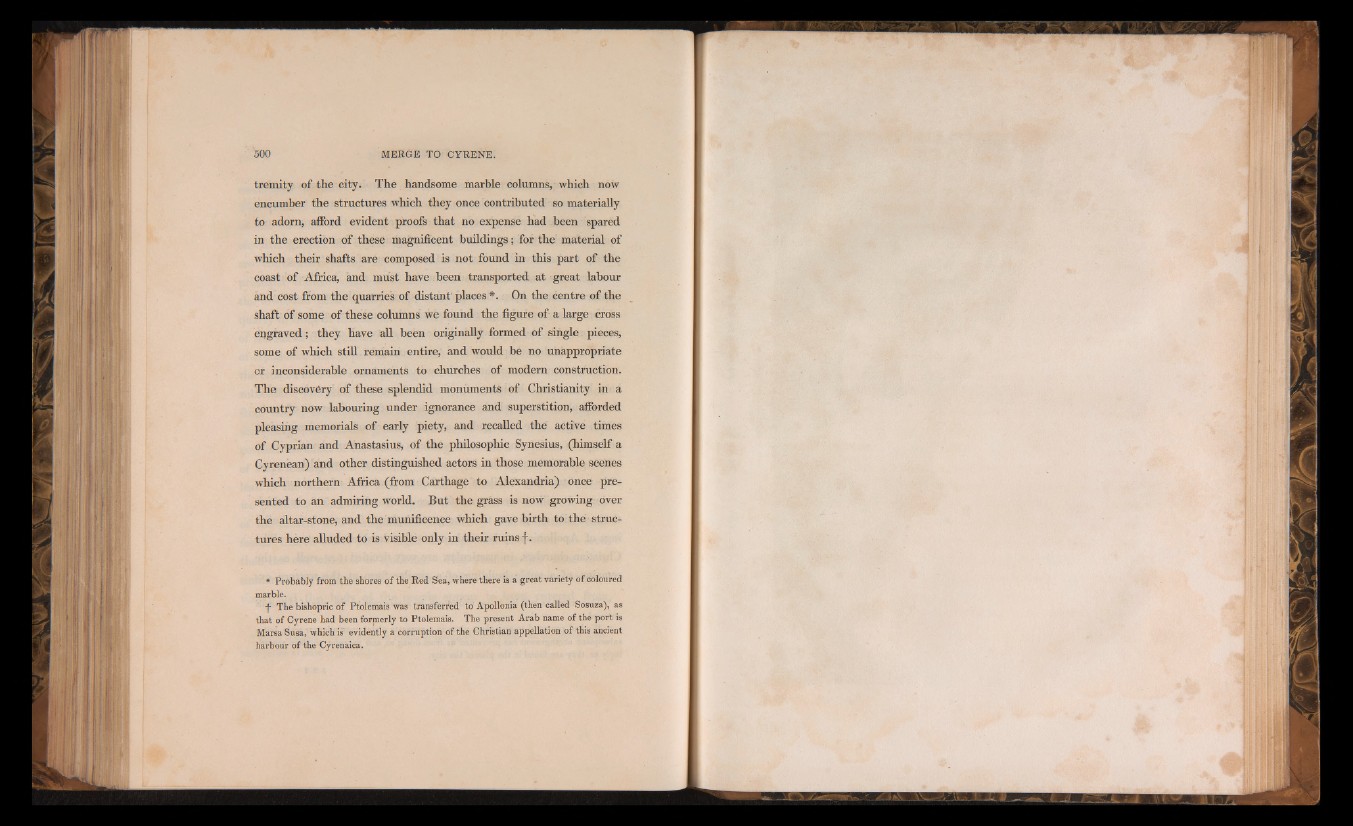
500 MERGE TO CYRENE.
tremity of the city. The handsome marble columns,-which now
encumber the structures which they once contributed so materially
to adorn, afford evident proofs that no expense had been spared
in the erection of these magnificent buildings; for the material of
which their shafts are composed is not found in this part of the
coast of Africa, and must have been transported at great labour
and cost from the quarries of distant1 places *. On the centre of the
shaft of some of these columns we found the figure of a large cross
engraved; they have all been originally formed of single pieces,
some of which still remain entire, and would be no unappropriate
or inconsiderable ornaments to churches of modern construction.
The discovery of these splendid monuments of Christianity in a
country now labouring under ignorance and superstition, afforded
pleasing memorials of early piety, and recalled the active times
of Cyprian and Anastasius, of the philosophic Synesius, (himself a
Cyrenean) and other distinguished actors in those memorable scenes
which northern Africa (from Carthage to Alexandria) once presented
to an admiring world. But the grass is now growing over
the altar-stone, and the munificence which gave birth to the structures
here alluded to is visible only in their ruins f .
* Probably from the shores of the Red Sea, where there is á great variety of coloured
marble.
*|* The bishopric of Ptolemais was transferred to Apollonia (then called Sosuza), as
that of Cyrene had been formerly to Ptolemais. The present Arab name of the port is
Marsa Susa, which is evidently a corruption of the Christian appellation of this ancient
harbour of the Cyrenaica.
IBBH